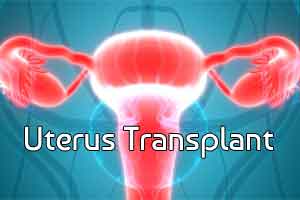- Home
- Editorial
- News
- Practice Guidelines
- Anesthesiology Guidelines
- Cancer Guidelines
- Cardiac Sciences Guidelines
- Critical Care Guidelines
- Dentistry Guidelines
- Dermatology Guidelines
- Diabetes and Endo Guidelines
- Diagnostics Guidelines
- ENT Guidelines
- Featured Practice Guidelines
- Gastroenterology Guidelines
- Geriatrics Guidelines
- Medicine Guidelines
- Nephrology Guidelines
- Neurosciences Guidelines
- Obs and Gynae Guidelines
- Ophthalmology Guidelines
- Orthopaedics Guidelines
- Paediatrics Guidelines
- Psychiatry Guidelines
- Pulmonology Guidelines
- Radiology Guidelines
- Surgery Guidelines
- Urology Guidelines
Eight children born after uterus transplants

Eight children born and the first robot-assisted operation performed. These are some of the results of 18 years of research at Sahlgrenska Academy on uterus transplants. In Gothenburg, the elite of the research world in the field are now gathering for their first congress.
In three years, from September 2014 to today, eight children in the world have been born to mothers who had fertilized eggs returned after undergoing a uterus transplant. All of this has taken place in the scope of the research conducted at Sahlgrenska Academy since 1999.
The first birth enjoyed the international attention. When children seven and eight came into the world one week apart this past summer, the framing was considerably calmer. For one of the mothers, it was her second child; she had undergone two pregnancies with the same donated uterus.
In a new project, the researchers in Gothenburg are now focusing on robot-assisted operations. The objective is to more easily handle the challenge of operating inside the woman's bowl-shaped pelvis. The basic technology is the same as in some cancer operations, such as cervical cancer operations.
"The hypothesis in our research is that we can do it significantly faster this way and with an earlier return home for the patients," says Mats Brännström, Professor of Obstetrics and Gynecology at Sahlgrenska Academy and Senior Physician at Sahlgrenska University Hospital.
One operation took place in May, four await in October and December and the remaining five will be done in coming years. Just like before, the attempts to make the women pregnant begin one year after they have received the transplanted uterus when the situation regarding medication against rejection has stabilized.
Besides the robot-assisted operations, one of which was also done in China, donations from deceased donors is also an issue of current interest. Not for the Swedish researchers, here it has always been about living and related donors, but the ideas are being considered elsewhere in the world.
Mats Brännström describes uterus transplants as an internationally growing field with a need for a common compulsory register of all procedures done in order for the researchers to get an overview. The register will be an important issue when the year-old organization, International Society for Uterus Transplantation (ISUTx) holds its first congress, until September 19.
Mats Brännström believes that uterus transplants will also be done outside the research sphere in a few years. He is well aware of the discussion of priorities in healthcare and actually does not want to have opinions on matters other than the medical.
"In the future, this method will become even more effective, and a clinical reality. We don't know if this will be in Sweden. Medically, it's fully realistic in five years, but there are many other decisions we have no control over," he says.
Facts About Uterus Transplants
Uterine infertility is the kind of female infertility that has had no treatment. More than 200,000 women in Europe are estimated to have uterine infertility.
The first transplant attempt with a living donor was made in Saudi Arabia in 2000. The uterus had to be removed shortly after the procedure.
In 2011, a transplant was done in Turkey with a uterus from a brain-dead patient. Several embryo return attempts were reported. Two early pregnancies ended in miscarriage bleeding. No other pregnancy has been reported
Operations 2-11 in the world with living donors were done at Sahlgrenska Academy in the scope of the world's first systematic and scientifically based study. In 2014, the first child was born.
In a new research project, the possibilities of robot-assisted operations are being studied. The project comprises ten operations of which five will be this year.
Donors, recipients, partners and children are monitored for a long time both medically, psychologically and from a quality of life perspective.
Professor Mats Brännström estimates that in recent years, there have been up to 20 more operations in the world. The idea is that the ISUTx congress and an international register will contribute to a better overview and to a scientific way to drive the field of research forward with the aim of increasing safety for patients and the effectiveness of the treatment.

Disclaimer: This site is primarily intended for healthcare professionals. Any content/information on this website does not replace the advice of medical and/or health professionals and should not be construed as medical/diagnostic advice/endorsement or prescription. Use of this site is subject to our terms of use, privacy policy, advertisement policy. © 2020 Minerva Medical Treatment Pvt Ltd